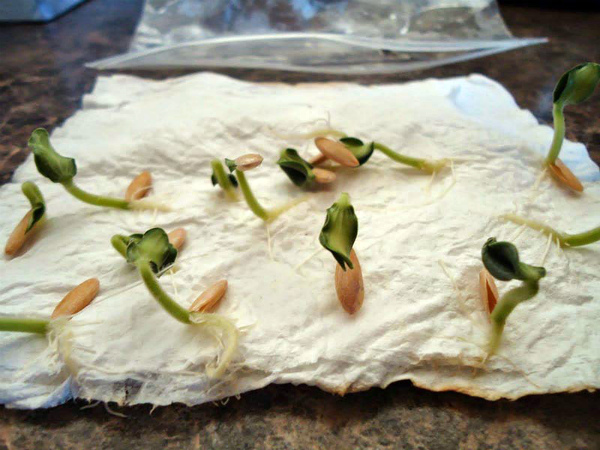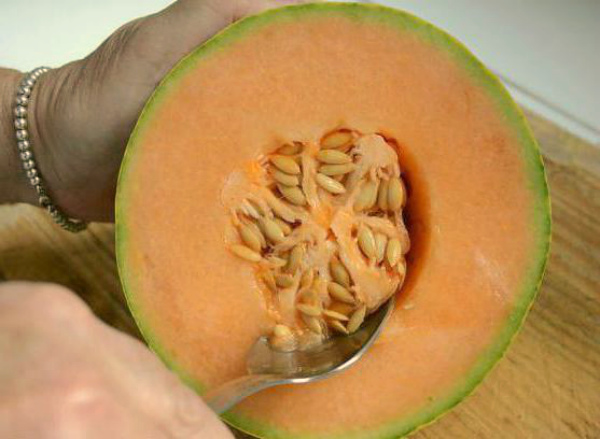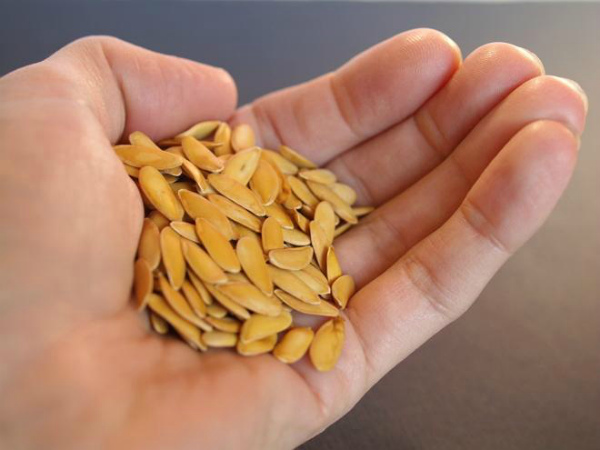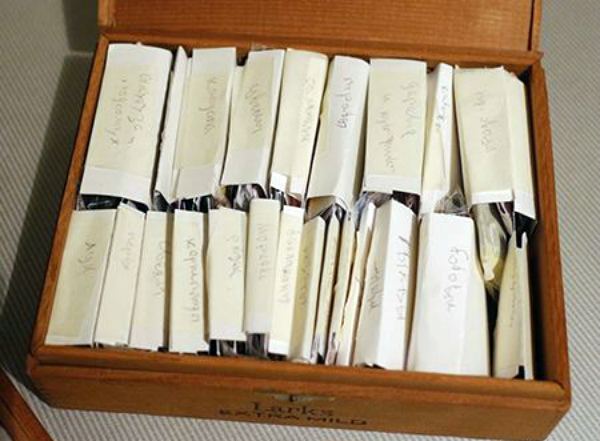How to properly harvest melon seeds for sowing
Content
Determination of seed germination
To plan the amount of planting material, you need to know its quality - that is why melon seeds are tested for germination. They take a certain number of seeds, be sure to count their total number, so that later you can calculate the number of germinated and determine the percentage of germination.
Before sowing, it is advised to select the material by soaking in salt water. To do this, take water at room temperature, dissolve table salt in it (30 g of salt per 100 ml of water), drop the seeds, mix. After 10 minutes, some of them sink to the bottom, and some remain floating on the surface. Low-quality seeds did not drown, they are immediately thrown away, and those that remain are spread on a napkin and dried at a temperature of about +25 degrees.
Seed germination is checked in wet sawdust. To do this, wood sawdust is spilled 3 or 4 times in half an hour with boiling water, then most of the wet sawdust is placed in prepared dishes (trays, trays, boxes - not necessarily deep), planting material is placed on them, the remains of sawdust are placed on top and well tamped. Seeds are placed in rows every two to three centimeters, one and a half centimeters are left between future sprouts. The temperature should be kept within + 24-27 degrees, and after three days the number of sprouts should be counted.
Knowing the exact number of seeds taken for the experiment and the exact number of sprouts, it is easy to calculate the percentage of germination and determine how many pieces are needed for sowing. The lower the germination percentage, the more planting material will need to be taken. It is better to know this in advance in order to be able to purchase the missing seeds.
Features of harvesting melon seeds
As a rule, planting material is taken from all garden crops after full maturity. You can also harvest melon seeds after you cut and eat the ripe, delicious fruit. Unripe seed gives weak shoots, and its germination rate is low.
What about late melons that we pluck without waiting for full ripeness? The so-called winter varieties continue to ripen even after they have been removed from the melons. And the process of maturation and growth in a seed continues all the time at a favorable temperature and humidity, because it is not for nothing that they are stored at a lower temperature than they grew. A decrease in air temperature to +15 degrees slows down the ripening process, and a temperature of +10 brings most plants to a dormant state.
So, if late varieties of melons are stored at temperatures from +12 to +15 degrees, then you can collect seeds from them when you cut the fruit for eating. Do not spoil it on purpose. If this happens a month after harvesting from the garden, then the seeds will only benefit.
Pulp with seeds is selected from the cut melon, the seeds themselves are separated and washed, laid out in a thin layer in a warm ventilated room for drying. Dry them well at temperatures from +35 to +40 degrees, higher is not desirable.
Some gardeners leave unwashed seeds with pulp to "ferment" in water for 3 or 4 days. This is said to increase germination. However, there is not enough data to come to a definite conclusion on this matter, so everyone chooses the method of preparing for storage himself, based on his own experience or preferences.
Seed packaging and storage
For the future harvest, it is important not only to correctly collect the seeds, you also need to prepare them for storage, create appropriate conditions, and make sure not to exceed a reasonable period of storage and use. Violation of optimal conditions can lead to a deterioration in germination, weak shoots, and a slowdown in vegetation.
How long can you store
The best growing result will be obtained if 2 or 3 year old seeds are used for sowing. Melon will thrive with older seed. In general, melon seeds can be stored without losing their qualities for up to 8 years, so it is completely unnecessary to use last year's stocks if there is a choice.
When buying seeds in a store, be sure to pay attention to the year of packaging, if possible, then choose not the freshest, but not the oldest.
Storage conditions
The dried grains are laid out in paper bags or linen bags if they will be stored for no more than a year. It is better not to use plastic bags at all due to the high probability of mold on insufficiently dried seeds. For a longer period, they are put in glass jars or bottles with ground-in lids. On the packaging or utensils, it is imperative to make notes with the name of the crop and the year when the seeds were harvested.
It depends on the heat and humidity how quickly the metabolic processes will proceed in the grain, because the grain remains alive and breathes, it is just that all life processes slow down due to the lack of these basic components - heat and moisture. So, the humidity in a sealed container with seeds should be no more than 6%, so that a full-fledged plant can then develop and grow from them. The room in which the seed is stored must be ventilated, the air temperature must be maintained at + 14–16 degrees, and the humidity must be no more than 60% (even better if it is 50%). If the humidity rises to 75%, then this will certainly adversely affect the quality of the planting material, it may well rot with such humidity.
The correct organization of storage conditions for seed is a very important condition for obtaining a good harvest not only of melons, but in general of all garden crops.
Melon Seed Soaking Video
In this video, you will learn about two ways to soak melon seeds to prepare them for sowing seedlings.





